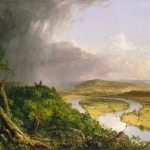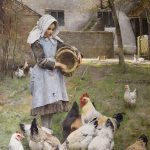When you think of abstract expressionism, two names likely come to mind: Jackson Pollock and Lee Krasner. These two artists not only shaped the art world with their unique styles but also influenced each other in profound ways. This article dives into their lives, their relationship, and their artistic evolution. You’ll see how their collaboration and individual talents created a legacy that continues to inspire artists today.
Early Lives and Artistic Beginnings
Jackson Pollock and Lee Krasner both had humble beginnings. Pollock was born in Cody, Wyoming, in 1912, while Krasner was born in Brooklyn, New York, in 1908. Despite their different backgrounds, they both showed early talent in art.
Pollock struggled in school and often moved around due to his family’s financial instability. However, his passion for art never wavered. He eventually attended the Art Students League in New York City, where he studied under Thomas Hart Benton. Benton’s emphasis on rhythmic forms and dynamic compositions greatly influenced Pollock’s early work.
On the other hand, Krasner grew up in a more stable environment, which allowed her to focus on her education. She attended several art schools, including the Cooper Union and the National Academy of Design. Krasner was deeply influenced by modernist ideas and became involved with the Works Progress Administration (WPA) Federal Art Project, where she met many avant-garde artists.
Meeting and Early Influences
Pollock and Krasner met in the early 1940s, during a time when both were trying to find their artistic voices. The New York art scene was buzzing with new ideas and styles, and both artists were eager to make their mark.
Their meeting was not just a romantic connection but also an artistic one. Krasner saw potential in Pollock’s raw talent and introduced him to various modernist techniques and theories. She helped him refine his approach, encouraging him to explore more abstract forms. In turn, Pollock’s intense passion and unique perspective inspired Krasner to push her boundaries.
During this period, they both absorbed influences from European modernists, such as Pablo Picasso and Henri Matisse. They also drew inspiration from Native American art and Mexican muralists like Diego Rivera. These diverse influences helped them develop their distinct styles.
Rise of Abstract Expressionism
Abstract expressionism emerged in the 1940s as a dominant force in the American art scene. Pollock and Krasner became central figures in this movement, known for its emphasis on spontaneous, automatic, or subconscious creation.
Pollock’s technique, famously known as “drip painting,” revolutionized the art world. He placed canvases on the floor and dripped, poured, or splattered paint onto them, creating intricate webs of color and texture. This method allowed him to engage with his work physically and emotionally, producing pieces that were both chaotic and harmonious.
Krasner, while not as immediately recognized as Pollock, also made significant contributions to abstract expressionism. Her work often featured bold colors and dynamic compositions, reflecting her strong sense of rhythm and movement. Krasner’s paintings evolved over time, showing her ability to adapt and innovate within the abstract expressionist framework.
Marriage and Mutual Influence
Pollock and Krasner married in 1945 and moved to a farmhouse in Springs, Long Island. Their relationship was both supportive and tumultuous. They encouraged each other’s work but also faced personal challenges, including Pollock’s struggles with alcoholism.
Despite these difficulties, their marriage had a profound impact on their art. Krasner often played the role of critic and mentor, helping Pollock stay focused and pushing him to explore new techniques. She described this dynamic: “I painted a little, and then I’d go out and he’d paint a little. We were very good for each other.”
Pollock’s work during this time reached new heights. His “drip” paintings, such as “No. 5, 1948,” gained critical acclaim and solidified his reputation as a leading abstract expressionist. Meanwhile, Krasner continued to develop her style, producing works like “The Seasons,” which showcased her ability to blend organic forms with abstract elements.
Krasner’s Evolution as an Artist
Krasner’s artistic journey did not stop with her support of Pollock. She continued to evolve and experiment, even after Pollock’s untimely death in 1956. This period marked a significant transformation in her work, as she sought to establish her identity separate from her husband’s legacy.
Her “Little Image” series, created in the late 1940s and early 1950s, exemplifies this shift. These paintings feature intricate patterns and symbols, reflecting her interest in ancient and primitive art. Krasner’s use of color and form became more daring, showcasing her confidence as an independent artist.
In the years following Pollock’s death, Krasner’s work grew larger in scale and more expressive. She began to incorporate collage elements into her paintings, using torn paper and fabric to create textured, layered compositions. This approach added a new dimension to her work, making it more dynamic and engaging.
Legacy and Recognition
Pollock and Krasner’s contributions to abstract expressionism left an indelible mark on the art world. However, it took time for both artists to receive the recognition they deserved.
Pollock achieved fame during his lifetime, but his reputation grew even more after his death. Today, his “drip” paintings are celebrated as masterpieces of modern art, and his innovative techniques continue to inspire artists worldwide. Pollock once said, “Every good artist paints what he is,” capturing the essence of his deeply personal and expressive approach to art.
Krasner’s recognition came later, as critics and historians began to appreciate her contributions to abstract expressionism. Her solo exhibitions in the 1960s and 1970s helped establish her as a significant artist in her own right. Krasner’s ability to continually reinvent herself and her work earned her a lasting place in art history.
The Intersection of Their Work
Pollock and Krasner’s work intersected in many ways, reflecting their mutual influence and shared environment. Living and working together in Springs, they often drew inspiration from the same surroundings and experiences.
Their home, filled with natural light and surrounded by nature, provided a serene backdrop for their creative processes. They both drew upon the textures, colors, and forms of the natural world, translating these elements into their abstract compositions. This shared environment fostered a unique dialogue between their works, creating a cohesive yet diverse body of art.
While Pollock’s paintings often exuded raw energy and intensity, Krasner’s works conveyed a sense of balance and harmony. This contrast highlighted their individual strengths and underscored the complementary nature of their artistic partnership.
Conclusion
Jackson Pollock and Lee Krasner’s relationship and work profoundly impacted the world of abstract expressionism. Their dynamic partnership, characterized by mutual influence and creative exchange, produced some of the most innovative and influential art of the 20th century.
Pollock’s revolutionary “drip” paintings and Krasner’s evolving style showcased their ability to push the boundaries of art and explore new frontiers. Despite personal challenges and the complexities of their relationship, they supported and inspired each other, leaving a lasting legacy that continues to inspire artists and art lovers today.
Their story reminds us of the power of collaboration and the profound impact that two creative minds can have on each other and the world. As we continue to celebrate their contributions, we also recognize the importance of individual voices and the unique perspectives they bring to the ever-evolving world of art.




